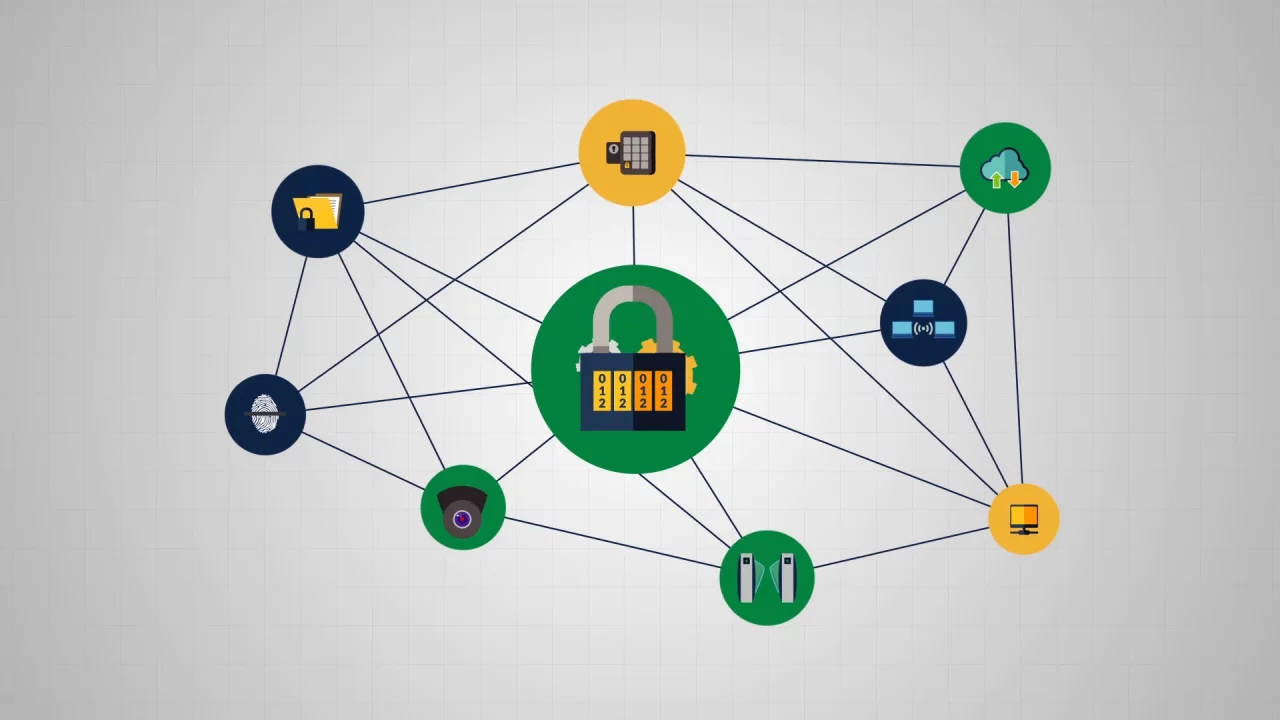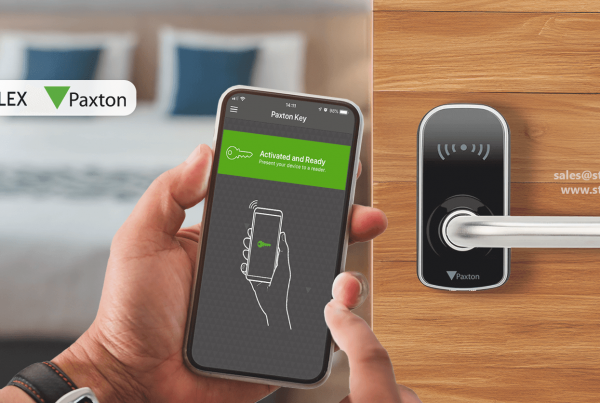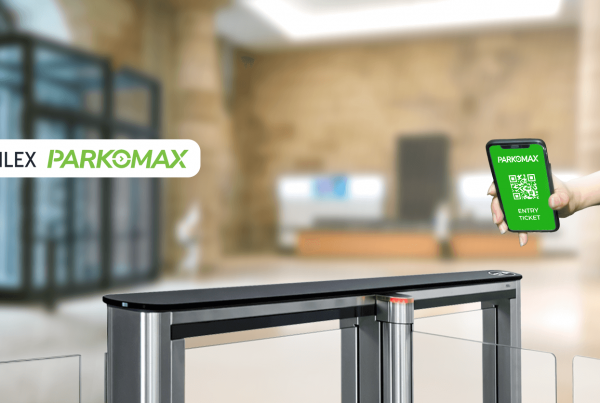What is OSDP?
OSDP (Open Supervised Data Protocol) is a communication protocol used in physical access control systems to provide secure bi-directional communications between devices. It is considered the industry’s gold standard for physical access control installations due to its higher security level and more use and integration options compared to the 40-year-old Wiegand protocol still widely used.
OSDP was created to address security concerns that arise from using legacy systems that rely on outdated technologies like Wiegand. The protocol aims to improve the security of access control communications by using modern encryption methods and bi-directional communication between devices. Bi-directional communication means that devices can communicate with each other in both directions, allowing for more effective management and monitoring of the access control system.
OSDP supports the use of advanced smart card technology and biometrics, which further enhance the security of the system. Smart cards contain embedded microprocessors that can store and process data securely, while biometrics use unique physical characteristics of individuals like fingerprints or facial recognition to identify and authenticate users.
One of the key advantages of OSDP is its interoperability between access control and security devices. This means that devices from different manufacturers can communicate with each other seamlessly, making it easier to integrate different components of the access control system. This also reduces costs and increases efficiency, as devices can be easily added or replaced without requiring extensive reconfiguration.
To ensure that OSDP remains up-to-date with the latest security standards and requirements, it is constantly being refined and updated. The latest version, OSDP v2.1.7, is currently gaining recognition as a standard by ANSI, which is an independent organization that oversees the development of standards for a wide range of industries. This recognition further confirms the importance and effectiveness of OSDP in ensuring secure access control communications.
What is the Wiring Diagram for OSDP?
OSDP is a communication protocol used in access control systems. The wiring diagram for OSDP can vary depending on the specific devices being used but generally follows a similar layout.
The diagram typically includes connections for a Peripheral Device (PD) or Access Control Unit (ACU) and a reader, as well as power and ground connections. The OSDP wiring diagram is often used to integrate OSDP with existing Wiegand devices.
Here are some common components and their connections in an OSDP wiring diagram:
- Reader: The reader is typically connected to the ACU/PD using a two-wire interface for data transmission.
- Access Control Unit (ACU): The ACU is responsible for controlling access to a door or other access point. It communicates with the reader and the PD using OSDP.
- Peripheral Device (PD): The PD can be a keypad or other device used to control access. It is connected to the ACU using OSDP.
- Power: Power connections are typically made to the ACU/PD using a DC power supply.
The OSDP wiring diagram will also provide information on Pin Designations, DIP Switch Settings, OSDP Default Parameters, Status LED Behavior, and Bench Testing. These details will vary depending on the specific devices being used.
It’s important to note that installation and wiring of access control systems should always be done by a licensed professional with experience in OSDP systems to ensure proper installation and to prevent any potential security vulnerabilities.
What is the OSDP Protocol?
To further elaborate, the OSDP protocol is a communication standard that defines the messages exchanged between an access control panel or host computer and peripheral devices such as card readers, biometric readers, and other access control devices. These messages include commands to send data, receive data, and perform various operations such as unlocking doors and granting access.
The OSDP protocol supports two-wire communication using RS-485, which allows for longer cable runs and multi-drop installations. It also provides end-to-end encryption and tamper detection, ensuring that all communications are secure and protected against unauthorized access.
One of the key benefits of the OSDP protocol is its interoperability with various types of access control devices and systems. It allows for the integration of different types of devices and software, making it easier to manage and monitor access control systems.
Overall, the OSDP protocol offers a high level of security, flexibility, and interoperability, making it an ideal choice for organizations looking to implement a secure and scalable access control system.
How Does OSDP Protocol Work?
The OSDP protocol works by establishing a secure communication channel between the access control reader and the controller using a serial interface. The communication is bi-directional, meaning that data can be sent and received between the reader and controller, allowing for real-time monitoring and control.
When a user presents a smart card to the reader, the reader sends a request to the controller to grant access to the user. The controller then sends a response back to the reader, either granting or denying access. This process is encrypted using the AES-128 algorithm, which ensures that all data exchanged between the reader and controller is secure and cannot be intercepted or tampered with.
The OSDP protocol also includes features such as device status monitoring, tamper detection, and event reporting. These features allow for real-time monitoring of the access control system and can alert security personnel to any potential issues or breaches in security.
In summary, the OSDP protocol works by establishing a secure communication channel between the access control reader and controller, allowing for real-time monitoring and control of the access control system. The use of encryption and advanced features such as device status monitoring and tamper detection make OSDP a reliable and secure solution for access control systems.
Advantages over Wiegand
OSDP offers improved reliability and flexibility over Wiegand. With OSDP, the system can monitor wiring and check for issues such as shorts, which can lead to downtime and maintenance costs with Wiegand. OSDP also allows for remote configuration, so changes to the system can be made without having to physically access each device.
Another advantage is that OSDP supports biometric data transmission, which allows for more secure and accurate identification of users. Wiegand, on the other hand, is limited to transmitting only basic card information.
Overall, OSDP provides a more advanced and secure solution for access control systems than Wiegand.
| Feature | OSDP | Wiegand |
| Communication Type | Bi-directional | Uni-directional |
| Data Format | Encrypted | Unencrypted |
| Data Transfer Rate | Up to 115.2 kbps | Up to 128 bits per second |
| Cable Distance | Up to 4,000 feet | Up to 500 feet |
| Security | Secure communication using AES-128 encryption | No encryption |
| Interference | Resistant to EMI/RFI | Prone to EMI/RFI |
| Device Addressing | Supports device addressing | Does not support device addressing |
| Tamper Detection | Supports tamper detection | Does not support tamper detection |
| Biometric Wiring | Supports bi-directional data exchange between reader and PC | Wiegand does not support biometric data exchange between devices |
| Compatibility | Compatible with biometric readers and other devices | Limited compatibility with biometric readers and other devices |
| Backward Compatibility | Compatible with Wiegand readers | Not compatible with OSDP readers |
Key Takeaways:
Data Integrity, Single Credential
Traka’s entire data integrity is guaranteed by the seamless interface with Net2, which enables customers to gain from enhanced security and spur innovation. This involves instantly updating the Traka system with information about employees, credentials, and access levels. The use of a single credential that can be automatically regulated by time and day, with rapid audit control reporting as needed, for both door access and the keys and/or equipment handled by Traka is another benefit for users.
Monitoring in Real-Time and Visibility
Steve Rowlands, Divisional Director of Product Management stated that Net2 is a sophisticated access control system that is completely scalable and backed by ongoing development to deliver the optimum user experience. He further said that Traka is a market pioneer in key and equipment management systems, making them an obvious choice for them as an integration partner.
He further asserted, “This opportunity enhances complete site control, with centralized site visibility and real-time monitoring ensuring situational awareness of all keys and assets on both local and remote sites.”
Central Management Control For Key And Equipment
With considerable advantages and extra capability, the TrakaWEB sophisticated software integration has been created to assist intelligent key and equipment central management control with the goal of drastically lowering administrative costs. The ability to expose Traka events and alerts so that they are visible within the Net2 software and the ability to manage the Traka system from the comfortable access control environment are further advantages. This includes offering curfew capability to guarantee keys are checked out and returned within certain, predetermined time frames and altering staff access to particular objects.
Simple Access Control
Paxton’s networked access control system offers a comprehensive remedy when coupled with Traka. Dave Thomas, Technical Manager at Traka UK noted that Net2 makes access control of any building straightforward. Paxton’s networked access control system offers a comprehensive solution for all access control management needs when linked with Traka.
He further added, “It’s a truly exciting integration opportunity that combines the powers of two future-proof technologies to create a security solution that really can simplify administration.”
Management of Sites and Assets
Traka can give easy, clever methods to improve the site and asset management the more integrations it can develop with like-minded industry leaders. “Combined with our established installation, R&D, and technical support services, it demonstrates our capability to be “local when you need us, global when it counts.” said one of the officials.
About Stebilex Systems
Stebilex Systems is dedicated to helping our clients make the right choices for their home automation, gate automation, door automation systems, traffic management, tollway management, parking management and perimeter access.
We believe that everyone should benefit from the convenience and security of automation technology, whether it is a housewife looking to open the door with a wave of her hand or a business owner who is looking for better-controlled access for their clients. With our help, you will find peace in your life as you can control your home or office better.
Stebilex distributes Access Control products from leading brands like Automatic Systems, TiSO, Optima, etc., in addition to other lines of popular perimeter access control, biometric, door and gate automation brands like FAAC, Magnetic Auto Control, Paxton, Idemia, HID, Virdi, Iris ID, Assa Abloy, etc.
Let Stebilex’s experts assist you today.
☑ Stebilex UAE: sales@stebilex.com
☑ Stebilex Egypt: egypt@stebilex.com
☑ Stebilex Qatar: sales.qatar@stebilex.com
☑ https://stebilex.com
Do you need help with your Access Control or Biometrics projects?
Let experts at Stebilex help you today.





